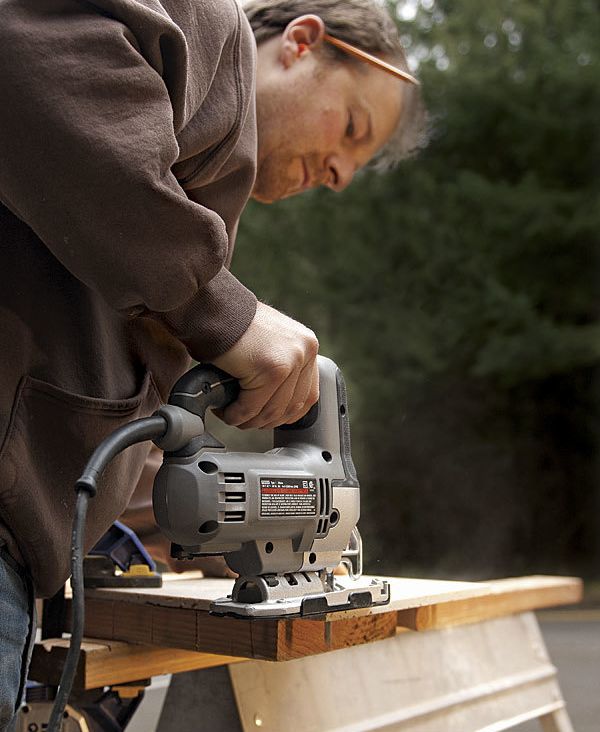Tool Test: Top-Handle Jigsaws
The best of these pro-level tools should be equally suited to heavy, aggressive cuts and delicate, detailed curves.

Synopsis: Jigsaws have become indispensable tools for all types of curved and straight cutting. In this tool test, builder Paul Johnson looks at the current crop of top-handle jigsaws. He examined them for speed, control, size, weight, and power, and also rated their amenities (LED lights, vacuum ports, dust blowers, and carrying cases). After testing the seven tools on softwoods, hardwoods, plywood, metal, and porcelain tile, Johnson rated a Makita model as best overall and a Bosch model as best value. He also tested jigsaws from DeWalt, Festool, Metabo, Milwaukee, and Porter-Cable.
The jigsaw has come a long way since albert Kaufmann first strapped a sawblade onto his wife’s sewing machine back in 1946. From humble beginnings, it has become an indispensable tool for all manner of curved and straight cutting, especially on the job site.
The two main styles of jigsaw are barrel grip and top handle. Ask a room full of carpenters which is better, and you’re bound to get an earful. According to the manufacturers included in this group, though, the top-handle jigsaw is the more popular, so I chose to focus on pro-level tools in that style here.
My goal was to find out the basic differences among these models — speed, control, size, weight, and power — as well as the amenities that set them apart: LED lights, vacuum ports, dust blowers, and carrying cases. I tested the saws on softwoods, hardwoods, plywood, metal, and porcelain tile to determine how each saw performed with different materials.
Four standout features
Each of the jigsaws tested has some standard features: a variable-speed dial for controlling blade-stroke speed, an adjustable tilting baseplate for beveled cuts from 0° to 45°, a trigger lock-on button, toolless blade-change and T-shank blade compatibility, a guard to protect against accidentally touching the moving blade, and a nonmarring cover for the metal baseplate. These tools also have four features more crucial to their success, and they vary widely in performance.
Blade release
You never want to grab a blazing-hot blade to remove it from the tool. Ideally, the blade can be ejected with some force or, at a minimum, can drop out easily at the push of a button.
Accurate tracking
If a jigsaw can’t maintain a straight, square cut, it’s not worth your money. The best models are manufactured to tight tolerances, are able to keep the blade from wandering out of tight curves, and can handle even the deepest cuts.
Good sightlines
Balancing compact design, blade-guard placement, and chip clearing is a major challenge. Keeping your eye on the cutline is also crucial, ideally without having to crane your neck to unreasonable angles. If done properly, lights, blowers, and vacuums help.
Orbital action
By moving the blade in an elliptical pattern instead of just straight up and down, the cut speed increases. As speed increases, however, cut quality decreases, so this feature must be adjustable.
For more photos and details, click the View PDF button below:
Fine Homebuilding Recommended Products
Fine Homebuilding receives a commission for items purchased through links on this site, including Amazon Associates and other affiliate advertising programs.

Reliable Crimp Connectors

Handy Heat Gun

Affordable IR Camera






















